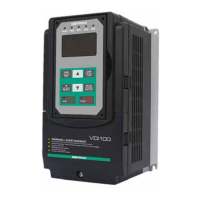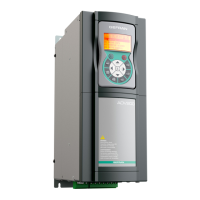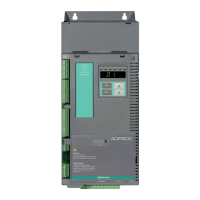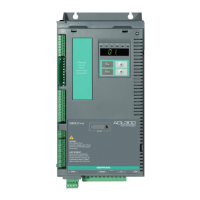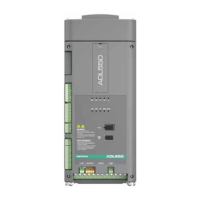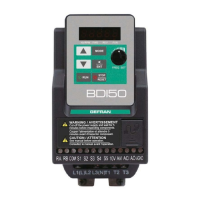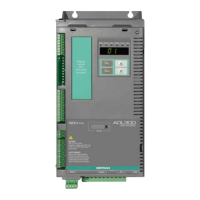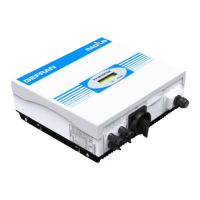Figure4.4.14Torquecompensationgaintoincrease/decreaseoutputtorque
Base frequency
100%
Output Voltage
Torque
Increase
Torque
Decrease
01-10
Increase value when:
• The wiring between the inverter and the motor very too long
• The motor size is smaller than the inverter size
Note: Gradually increase the torque compensation value and make sure the output current does not exceed inverter rated
current.
Reduce value when:
• When experiencing motor vibration.
Conrm that the output current at low speed does not exceed the rated output current of the inverter.
Code Parameter Name / Range
01-11 Selection of Torque Compensation Mode
0: Torque Compensation Mode 0
1: Torque Compensation Mode 1
Torque compensation mode 0 is the general mode.
Torque Compensation Mode 1 is the high speed mode (120~160Hz) and the compensation amount decreases
as the increasing frequency. When the speed is at 0~120Hz, the compensation amount is the same as that in
Torque compensation mode 0.
Code Parameter Name / Range
01-14 Input voltage setting
230V: 155.0~255.0 V
400V: 310.0~510.0 V
The minimum input voltage of inverter is 0.1V.
Set the inverter input voltage (E.g. 200V / 208V / 230V / 240V or 380V / 415V / 440V / 460V / 480V).
This parameter is used as a reference for predened V/f curve calculation (01-00 = 0 to E), over-voltage protec-
tion level, stall prevention, etc…
Note: It will depend on restore factory setting(13-08) to set the value of voltage
Code Parameter Name / Range
01-15 Torque compensation time
1~1000 ms
Set the torque compensation delay time in milliseconds.
Only adjust in the following situations:
• Increase value when: experiencing motor vibration
• Decrease value when: motor torque response is too slow
136 VDI100 • Instruction manual
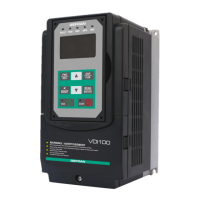
